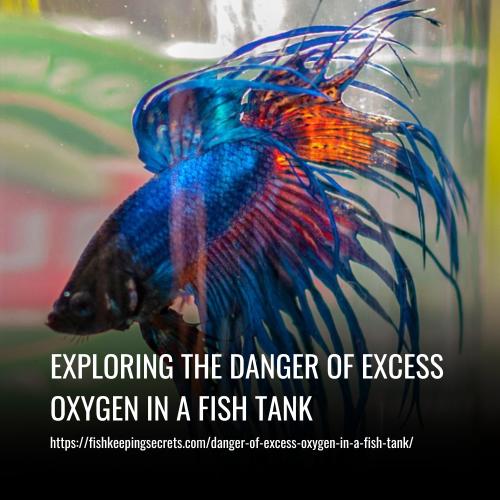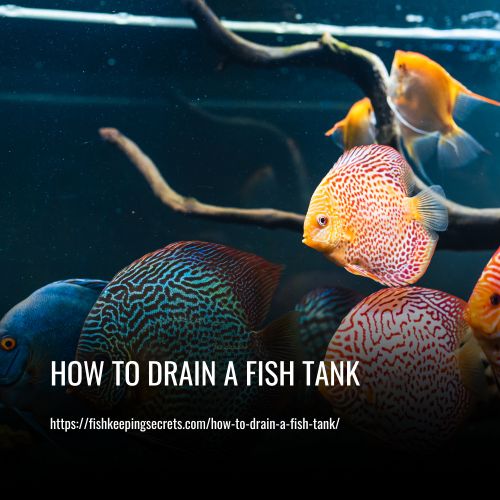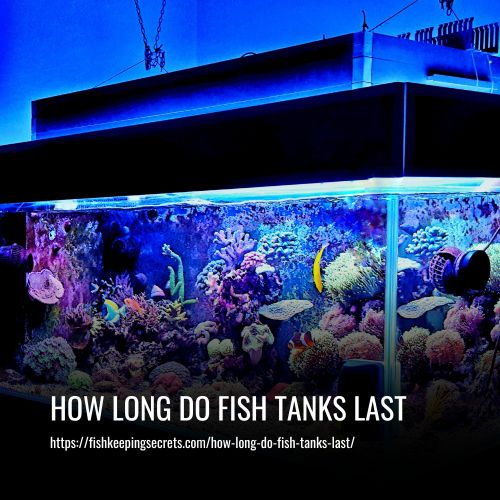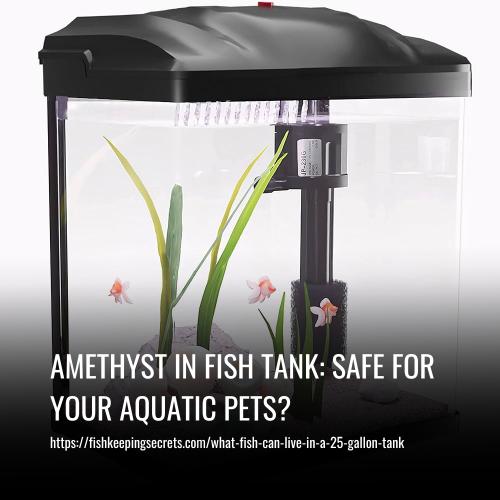Exploring the Danger of Excess Oxygen in a Fish Tank
This post contains affiliate links. As an Amazon Associate, we earn from qualifying purchases.
Yes, too much oxygen in a fish tank can harm the fish, causing health problems and even death. Inadequate aeration or too much surface agitation can disrupt the delicate balance of oxygen levels in fish tanks.
Fish can suffocate if there is too much oxygen in the water, which can cause behaviors like gasping for air at the surface or rapid breathing. While oxygen is vital to aquatic life, too much of it can be just as hazardous to fish.
Therefore, it is crucial to maintain proper oxygen levels in a fish tank to ensure a healthy environment for the fish to thrive.

Understanding The Causes Of Excess Oxygen
Excess oxygen in a fish tank can be caused by several factors. Let’s explore them one by one:
Explanation Of Factors That Contribute To Excess Oxygen, Such As Too Many Plants Or Aerators
- Overpopulation of aquatic plants or too many aerators can produce excessive oxygen in the fish tank. Plants create oxygen via photosynthesis while aerators increase the oxygen level by allowing air to circulate.
- In a tank with too many plants or aerators, fish can be exposed to more oxygen than necessary, which can cause problems like gas embolism.
- Gas embolism occurs when too much oxygen gets trapped in the fish’s bloodstream, leading to tissue damage and even death.
Role Of Substrate And Surface Agitation In Oxygen Saturation
- Fish tanks with a lesser amount of substrate generally have more oxygen.
- Substrates like sand or rocks perform less of an oxygen-releasing function than gravel because of its lesser surface area.
- Surface agitation refers to the level of movement on the surface of the water. An energetic surface agitation can increase the oxygen level in the water.
- The size and amount of bubbles produced by surface agitation can impact the oxygen saturation rate.
How Excessive Oxygen Levels Can Harm Fish And Other Aquatic Life
- Fish do not have lungs. Instead, they absorb oxygen through their gills. Fish with excessive oxygen levels will absorb more oxygen than necessary through their gills.
- This can lead to gas embolism, as mentioned above, or speed up metabolic rates in fish.
- High metabolic rates in fish increase the amount of waste products produced, elevating the toxicity levels of ammonia and nitrogen in the water.
- Aquatic plants, snails, and other invertebrates can also have elevated oxygen levels that can lead to tissue damage and other complications.
While oxygenation is essential for fish tank health, too much oxygen can be harmful. It’s important to monitor oxygen levels in your fish tank and ensure a balanced ratio of aquatic life and oxygenation sources.
Symptoms Of Excess Oxygen
Fish need oxygen to survive, but too much of it can cause problems. Rapid breathing, erratic swimming, and gasping for air at the surface are all signs that your fish may be suffering from excess oxygen in the tank. Here are some other physical symptoms to look out for:
- Red or inflamed gills
- A swollen abdomen
- Bulging eyes
- Lethargy
- Loss of appetite
Behavioral Changes Due To High Oxygen Levels
In addition to physical symptoms, high oxygen levels can cause behavioral changes in fish. These changes are often linked to stress and can negatively impact overall health. Here are some potential behavioral changes to watch for:
- Agitation or hyperactivity
- Increased aggression
- Changing resting positions in the tank
- Jumping out of the water
Impact On Other Aquatic Life Forms
High oxygen levels don’t just affect fish – other aquatic life forms in the tank can be impacted too. Here are a few ways that high oxygen levels can impact other creatures:
- Algae bloom: High oxygen levels can stimulate the growth of algae, which can make the water in the tank cloudy and green.
- Bacterial imbalances: Excess oxygen can create an environment that’s not hospitable for certain beneficial bacteria that help keep the tank healthy.
- Reduced dissolved carbon dioxide: When the oxygen level is too high, it can drive out the carbon dioxide that other aquatic life forms need to survive.
While it is important to ensure that your fish gets enough oxygen to thrive, it is equally important to monitor and control the amount of oxygen in the tank to avoid causing harm to your aquatic pets. Keeping a close eye on your fish’s physical and behavioral changes can help you ensure a healthy and thriving ecosystem in your fish tank.
Measuring Oxygen Levels
There are several ways to measure oxygen levels in a fish tank:
Overview Of Different Methods Of Measuring Oxygen In A Fish Tank
Maintaining proper oxygen levels in a fish tank is crucial for the survival of aquatic life. There are two main methods to monitor oxygen levels – chemical testing kits and electronic probes. These methods ensure that we can identify if there are any oxygen deficiencies in our fish tank.
Here is an overview of each method:
- Chemical testing kits: These are affordable and simple to use, making them a popular choice for fish tank owners. The process involves measuring the oxygen levels by adding a reagent to a water sample, which will change color according to the oxygen level. The results rely on interpretation and can be subject to human error.
- Electronic probes: These are more expensive devices that can provide more accurate results. The probes directly measure the dissolved oxygen levels and can display an exact value using an LED screen. However, proper maintenance of the equipment is crucial, and it is essential to follow the manufacturer’s instructions for accurate results.
Importance Of Monitoring Oxygen Levels Regularly To Maintain A Healthy Environment For Aquatic Life
Fish tanks are a delicate balance of various factors, with oxygen levels being one of the most critical aspects. Maintaining a healthy environment in a fish tank requires constant monitoring of oxygen levels to prevent fish from suffocating or experiencing unnecessary stress.
Here are some reasons why it’s important to monitor oxygen levels regularly:
- Oxygen deficiency can harm aquatic life: Insufficient oxygen levels can cause fish to become weak, struggle to swim, and even suffocate. Furthermore, harmful bacteria will thrive in an oxygen-deficient environment, increasing the chances of infections and diseases.
- Oxygen saturation affects other vital factors: In addition to affecting aquatic life directly, oxygen levels impact other factors like alkalinity and pH. These factors, in turn, influence the overall health of fish and plants in a given tank ecosystem.
- Oxygen levels change over time: Oxygen levels can fluctuate over the day or long term. Factors like temperature, water movement, and the number and size of fish in a tank will all contribute to changes in oxygen levels. Monitoring oxygen levels regularly will help prevent any surprises that may upset the delicate balance of life in a fish tank.
Potential Issues With Inaccurate Or Inconsistent Oxygen Measurements
The accuracy and consistency of oxygen measurements make or break the overall health of a fish tank. Inaccurate measurements can lead to severe damage, while inconsistent measurements can go unnoticed until significant issues arise. Here are some potential issues that arise from inaccurate or inconsistent oxygen measurements:
- Harmful effects on water chemistry: If oxygen levels are not monitored regularly, the low levels of oxygen can cause bacteria growth, leading to harmful chemicals. The tank’s water chemistry will suffer, potentially causing long-term harm to fish and other aquatic life.
- Unpredictable environmental changes: Inaccurate oxygen measurements can also lead to unpredictable environmental changes, which can be detrimental to aquatic life. Algae blooms and sudden ph fluctuations are examples of environmental changes that can harm fish, plants, and coral in a tank.
- Difficulty in identifying the cause of problems: When oxygen levels are not measured accurately or consistently, it can be challenging to identify the root cause of any issues in a fish tank. Thus, it can be challenging to make necessary repairs or adjustments to maintain a healthy fish tank ecosystem.
Managing Oxygen Levels In A Fish Tank
Properly managing oxygen levels in a fish tank is essential to maintain a healthy and thriving aquatic environment. The amount of oxygen required in your fish tank is determined by the number of fish, plants and other aquatic life forms present.
High temperatures and overfeeding can also impact oxygen levels. Here are some practical steps that can be taken to manage oxygen levels:
- Reduce aeration: If you have an air pump, consider reducing the amount of air it is pumping into the water. This will limit the amount of disruption to the water’s surface, allowing the oxygen to linger in the water for longer, which can help balance oxygen levels for your fish.
- Remove plants: Although it may seem counterintuitive, removing plants can help improve oxygen levels since they can take up a significant amount of oxygen at night when they are not photosynthesizing.
Gradually Adjusting Oxygen Levels
It is crucial to adjust oxygen levels gradually to avoid harming your fish and other aquatic life forms. Abrupt changes in oxygen levels can lead to shock or even fish death. Even if oxygen levels seem high, sudden shifts can negatively impact the fish.
To adjust oxygen levels, start with small changes and carefully monitor the response of your fish.
Role Of Water Changes
Water changes can help regulate oxygen levels in your fish tank, but it’s important not to change too much water at once. If you change large amounts of water all at once, it can cause a sudden change in oxygen levels that can potentially harm the fish.
Instead, you should replace small amounts of water over time, gradually balancing the oxygen levels.
Managing oxygen levels in your fish tank involves carefully monitoring the amount of oxygen required by the aquatic life forms present. By reducing aeration, removing plants, gradually adjusting oxygen levels, and altering water changes, you can give your fish a healthy and thriving environment to live in.
FAQs
Yes, too much oxygen in a fish tank can cause harm to your fish. Fish need a specific range of oxygen levels in their water, and excess oxygen can cause stress and even fish death.
The easiest way to tell if there is too much oxygen in the fish tank is to observe the behavior of your fish. Signs of too much oxygen include fish gasping at the surface or swimming frantically. Water testing kits can also be used to measure oxygen levels.
If oxygen levels drop too low in a fish tank, your fish can suffocate and die. Symptoms of low oxygen levels include fish gasping at the surface, lethargic behavior, and bottom-dwelling fish crowding together.
To maintain proper oxygen levels, provide adequate filtration, avoid overstocking the tank, and add live plants. You can also aerate the water by adding an air stone or adjusting the flow of your filter.
The ideal oxygen level for a fish tank is between 5 and 7 mg/l. However, some fish species may require lower or higher levels. It’s important to research the specific needs of your fish to ensure they thrive in their environment.
Conclusion
Ultimately, the question of whether you can have too much oxygen in a fish tank is a complex one. While it’s true that fish need oxygen to survive, too much of it can also be problematic. High levels of oxygen can cause stress and damage to your tank’s aquatic plants, as well as to your fish themselves.
That’s why it’s essential to maintain a balance in your tank and monitor your oxygen levels closely. By regularly testing your water and adjusting your aeration equipment as necessary, you can ensure that your fish are getting the oxygen they need without overwhelming their habitat.






